Rane AD 22B Handleiding
Rane
Niet gecategoriseerd
AD 22B
Bekijk gratis de handleiding van Rane AD 22B (4 pagina’s), behorend tot de categorie Niet gecategoriseerd. Deze gids werd als nuttig beoordeeld door 27 mensen en kreeg gemiddeld 5.0 sterren uit 14 reviews. Heb je een vraag over Rane AD 22B of wil je andere gebruikers van dit product iets vragen? Stel een vraag
Pagina 1/4

Manual-1
OPERATORS MANUAL AD 22B
AUDIO DELAY
QUICK START
Quickly look around to make sure no one catches you reading this. You’re aware this is the manual aren’t you? Wow!
Most people only get about this far in a manual, but there are a few important things you should know about the AD 22B.
So please keep reading. These few points are summarized in this Cliff Note version of the manual.
ADJUSTING SENSITIVITY. First apply a signal with nominal input level and adjust the SENSITIVITY controls so
the red CLIP LEDs just light, then back off so the LEDs do not turn on, even with high signal peaks.
SETTING DELAY. Now that the input signal is calibrated, press the CHAN button until the CHAN LEDs indicate the
Channel you want to set. We cover the special case of adjusting both Channels simultaneously later (both CHAN LEDs on).
Adjust the up/down buttons until the LED display shows the desired Delay. To adjust the Delay of the other Channel press
the CHAN button until the other Channel’s LED is lit, and adjust the Delay as before.
STORING DELAY. Press the STORE button (the STORE LED stops flashing). This stores the current Delay values
into each Channel’s current Memory (A or B). The current Memory for each Channel is indicated by the MEMORY LED
lit when editing that Channel. Both Channel's current Delay values are stored with each press of the STORE button.
RECALLING DELAY. To recall a stored Memory, press RECALL. Each press of this button alternately recalls stored
Memories (A then B then A…) for the selected Channel only.
A quick way to recall Memories into both Channels simultaneously, is to store both Channel’s values into the same
Memory. With both Channels selected (both CHAN LEDs on), press RECALL to restore both Channel’s Memories at the
same time.
SETTING TEMPERATURE. The AD 22B is factory set for 22°C/71.6°F. To change this, press and hold DISPLAY
MODE and press one of the up/down buttons. Use the 1ms/COARSE buttons for degrees Celsius or the 10µs/FINE buttons
for degrees Fahrenheit. The LED display shows the temperature setting. Further pressing of the up/down buttons adjusts the
temperature setting. This temperature is used, with constant 30% humidity, to calculate the speed of sound for converting
delay times into distance.
Never connect anything except an approved Rane power supply to the red thing that looks like supply to the red thing
that looks like a telephone jack on the rear of the unit. This is an AC input and requires special attention if you do not have
a power supply exactly like the one originally packed with your unit. See the full explanation of the power supply require-
ments elsewhere in this manual.
Note: It is normal to hear harmless short bursts of stored data playback when recalling a memory. Also, powering up
the AD 22B without input signal eliminates chirping that may occur when scrolling delay values.
AD 22B CONNECTION
When connecting the AD 22B to other components in
your system for the first time, leave the power supply for last.
This gives you a chance to make mistakes and correct them
before any damage is done to your fragile speakers, head-
phones, ears, or brains. The AD 22B passes audio while it is
unpowered by virtue of its fail safe bypass relays (when the
AD 22B functions as a wire). Turn the system volume down
before plugging in the AD 22B’s power.
INPUTS AND OUTPUTS
The AD 22B’s Inputs and Outputs are electronically
balanced, so use only balanced wiring. The AD 22B’s shields
(pin 1) connect to chassis ground. Pin 2 is “hot” per AES
standards.
REMOTE RECALL TERMINALS
Each channel of the AD 22B has two nonvolatile Memo-
ries, “A” and “B”. Connecting a switch between the GND and
CH1 or CH2 terminals permits recalling the Memories
remotely. Only a change in the switch position is sensed—
when the switch closes, Memory B for the given Channel is
recalled. When the switch opens, Memory A is recalled.
Connecting the two Channel terminals (CH1 & CH2) together
on one side of the same switch, permits stereo recall of
Memories A and B.
WEAR PARTS: This product contains no wear parts.

Manual-2
FRONT PANEL DESCRIPTION
SIGNAL LEDs: illuminate green 34 dB before clipping.
SENSITIVITY controls: vary incoming signal levels to the A to D converter. The output signal is also adjusted so the AD
22B always passes signal with unity gain. (See operating instructions.)
CLIP LEDs: illuminate red 4 dB before clipping at the A to D converter input.
BYPASS buttons & LEDs: These momentary push buttons toggle each Channel’s hard-wired Bypass. If an LED is on, the
given Channel is Bypassed and functions like a wire. If it is off the given channel is active.
STORE LED: flashes green when the current configuration of the AD 22B is different from the stored configuration. The
STORE LED is off when the current configuration matches the stored configuration.
STORE button: Stores the current Delay configuration into both Channel’s current Memory (A or B). The current Memory
for each Channel is indicated by the MEMORY LED which is lit when editing that Channel.
MEMORY LEDs: indicate the most recently recalled Memory, A or B, for each Channel by illuminating yellow. They also
indicate the Memory that is written to when the STORE button is pressed. The MEMORY LED flashes when the current
Delay value for the selected Channel is different than the stored value for the selected Channel.
RECALL button: Pressing this pushbutton alternately Recalls stored Memories A and B, for the Channels(s) indicated by
the green CHAN LEDs.
CHANNEL LEDs: indicate the Channel number whose value is currently being displayed in the LED display and whose
current Delay value is editable by illuminating green. If both CHAN LEDs are on, both Channel’s current Delay values are
editable. In this edit BOTH mode, the LED display shows the smaller of the two current Delay values and the memory
LEDs turn off if the two Channel’s current Memories are not the same.
CHANNEL button: Pressing this button advances the Channel LEDs from CHAN 1 to CHAN 2 to BOTH. The current
Delay value of the selected Channel is displayed in the LED display. (This button does nothing in Mono Mode.)
DISPLAY MODE button & LEDs: This button changes the units of displayed Delay values from Milliseconds to Feet to
Meters. The LEDs indicate the current Display Mode: MILLISECONDS, FEET or METERS.
5 digit LED display: indicates the current Delay value for the selected Channel. When both Channels are selected, the
smaller of the two Channel’s current Delay values is displayed. This display also shows the current temperature setting when
holding down the DISPLAY MODE button and pressing one of the up/down buttons. On power-up the current software
revision level and internal Stereo/Mono (2CHAN/1CHAN) configuration are displayed.
UP/DOWN buttons: Pressing these buttons increases/decreases the amount of Delay in the selected Channel(s). The two
buttons just to the right of the LED display change Delay time in 1 millisecond steps. The far right buttons provide 10
microsecond steps. For distance displays (feet and meters), these buttons are FINE and COARSE adjustments, since Delay
increments are always in 1 msec and 10 µsec steps, regardless of the DISPLAY MODE.
TEMPERATURE setting: Holding down DISPLAY MODE while pressing the up/down buttons displays the current
temperature setting in degrees Celsius for the 1 msec/COARSE buttons and degrees Fahrenheit for the 10 µsec/FINE
buttons. Further up/down presses change the temperature setting. No matter which unit (°C or °F), adjustments are always in
1°C steps (or 1.8°F).

Manual-3
REAR PANEL DESCRIPTION
REMOTE RECALL terminals: Wiring external configuration switches to these terminals allows remote recall of the two
nonvolatile memories for each Channel. When the switch closes, Memory B for the given Channel is recalled. When the
switch opens, Memory A is recalled. These terminals use CMOS (+5 volt) logic levels and sink only 3 mA (max.) each.
Recessed lockout switch: Enables the Front Panel Lockout mode. In this mode all front panel controls, with the exception
of the CHAN and DISPLAY MODE buttons, are disabled. The Channel button remains active so the user may view the
current Delay values without risk of changing them, and the display mode button allows display of Delay values in millisec-
onds, feet or meters. Press RECALL while in LOCKOUT to temporarily display, but not Recall, the value of the other stored
Memory for the indicated Channel. (See OPERATING INSTRUCTIONS for optional Bypass lockout mode, and MEMORY
BUTTONS on previous page.)
INPUT/OUTPUT connectors: Nothing new here, the AD 22B uses balanced XLRs, with pin 2 “hot” per AES standards.
POWER input connector: No this is not where Commissioner Gordon plugs in his Bat-phone, in fact it is not a telephone
jack at all. The AD 22B uses an 18 volt AC center-tapped transformer only. Use only a model RS 1 or other remote AC
power supply approved by Rane. The AD 22B is supplied with a remote power supply suitable for connection to this jack.
Consult the factory for replacement or substitution.
Chassis ground point: A #6-32 screw and toothed washer is provided for chassis ground. Since the AD 22B does not get
chassis ground through the AC cord, this point is provided in case your system does not have another earth ground such as
the rack rails. See the CHASSIS GROUNDING note below.
NOTES
FCC & CE-EMC NOTICE
This equipment has been tested and found to comply
with the limits for a Class A digital device, pursuant to Part
15 of the FCC Rules, and meets the requirements found in
European EMC directive 89/336/EEC. These limits are
designed to provide reasonable protection against harmful
interference when the equipment is operated in a commer-
cial environment. This equipment generates, uses, and can
radiate radio frequency energy and, if not installed and
used in accordance with the instruction manual, may cause
harmful interference to radio communications. Operation
of this equipment in a residential area is likely to cause
harmful interference in which case the user will be required
to correct the interference at their own expense.
CHASSIS GROUNDING
If after hooking up your system it exhibits excessive
hum or buzzing, there is an incompatibility in the ground-
ing configuration between units. Here are some things to
try:
1. Try combinations of lifting grounds on units supplied
with ground lift switches (or links).
2. Verify all chassis are tied to a good earth ground.
3. Units with outboard power supplies do not ground
the chassis through the line cord. Make sure these units are
solidly grounded by tying the Chassis Ground Point to
known earth ground. Use a star washer to guarantee proper
contact.
Product specificaties
| Merk: | Rane |
| Categorie: | Niet gecategoriseerd |
| Model: | AD 22B |
Heb je hulp nodig?
Als je hulp nodig hebt met Rane AD 22B stel dan hieronder een vraag en andere gebruikers zullen je antwoorden
Handleiding Niet gecategoriseerd Rane
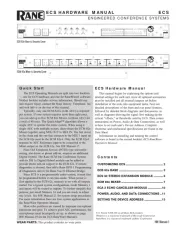
4 Juli 2025
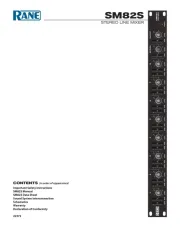
4 Juli 2025
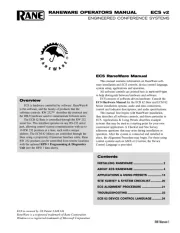
2 Juli 2025
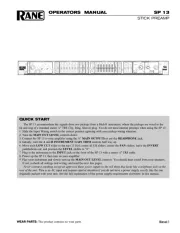
1 Juli 2025
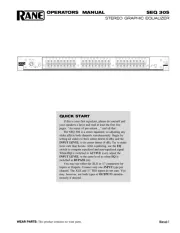
1 Juli 2025
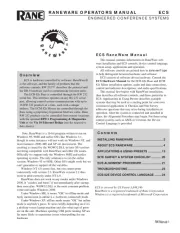
1 Juli 2025
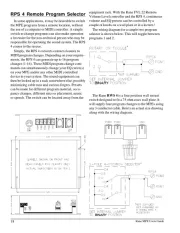
1 Juli 2025
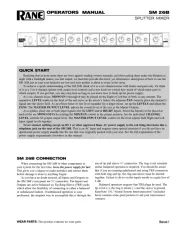
30 Juni 2025
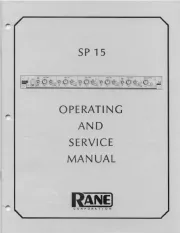
30 Juni 2025
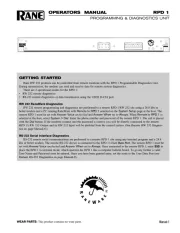
30 Juni 2025
Handleiding Niet gecategoriseerd
- Enermax
- Sheeran Looper
- MDT
- AccuTemp
- Em-Trak
- Bella
- Gator Frameworks
- HMD
- BIG
- Katrin
- Manley
- Advanced Network Devices
- Nexera
- Pulsar Observatories
- PAC
Nieuwste handleidingen voor Niet gecategoriseerd
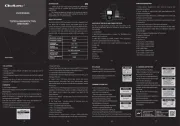
13 September 2025
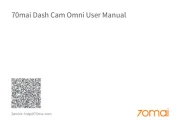
13 September 2025

13 September 2025

13 September 2025
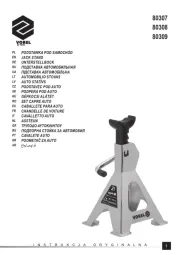
13 September 2025
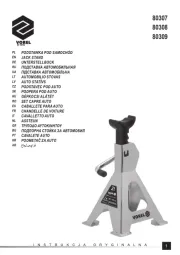
13 September 2025

13 September 2025

13 September 2025

13 September 2025
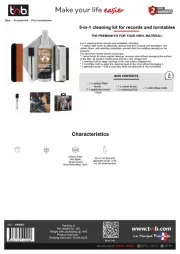
13 September 2025